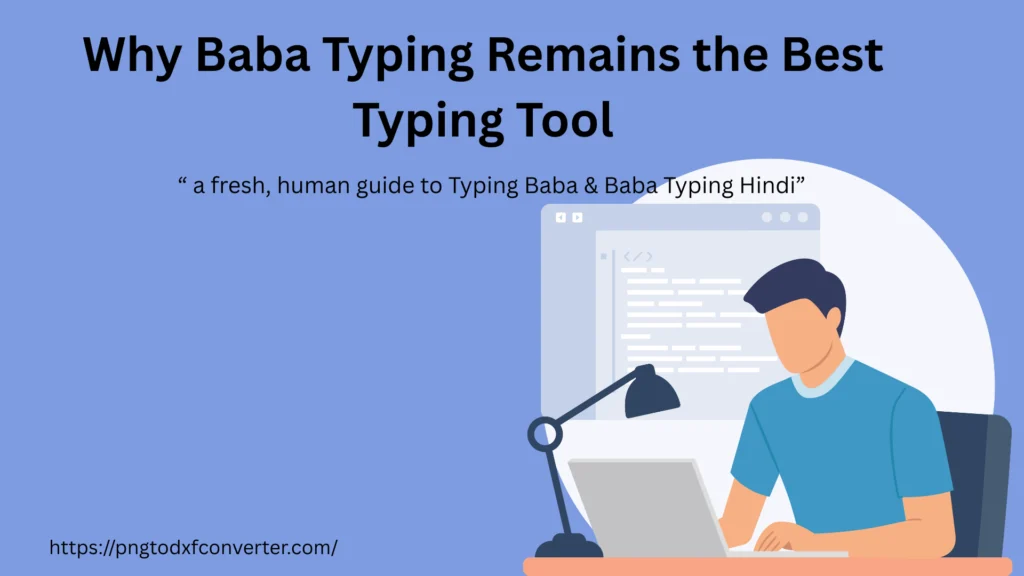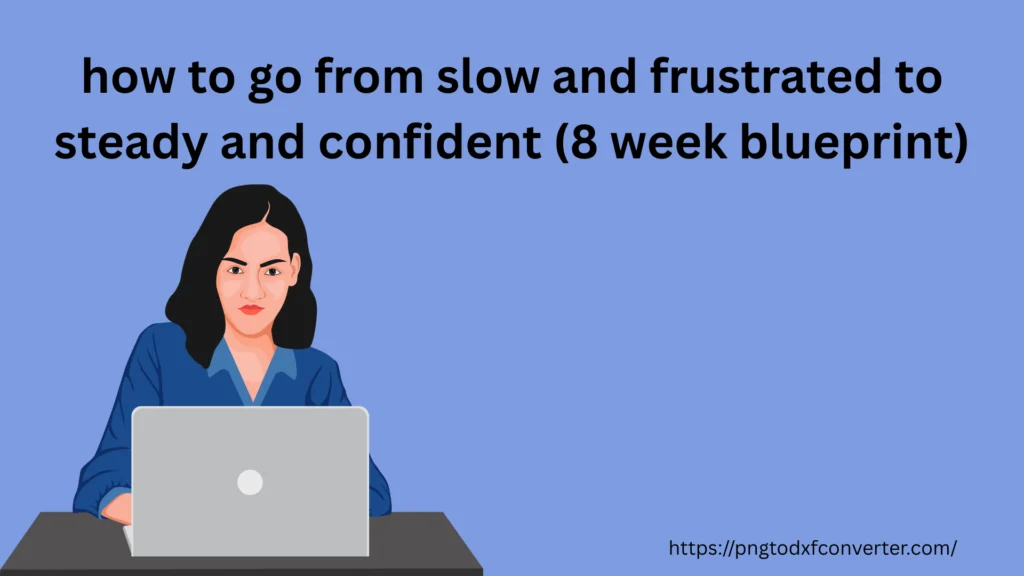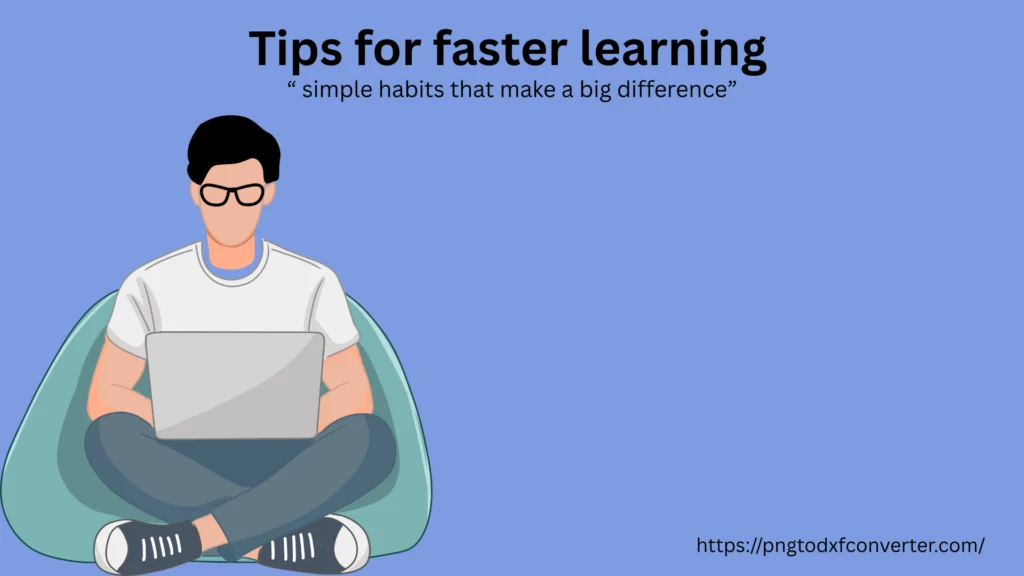
You have received training on data until October 2023. This proves true just for those accumulated. Typing in general is that silent daily habit in which you reap benefits each time you open a document, reply to an email, or fill in a form. Not glamorous at all, but the faster and more accurate touch changes how you do everything and how easy it seems to achieve what you do. Though many typing tutor speed test sites have come and gone over the years, Baba Typing (also often referred to as Typing Baba) keeps on recurring in classrooms, exam centers, and home practice routines.
In this guide, the reason why Baba Typing earns a share of your bookmarks bar will be explained in downright human language. It applies to how the tool brings changes in both English as well as Hindi typing practice plans, uses, and application version desktop, as well as while citing the font, which makes this platform distinctly handy for learners in India and beyond the Mangal font and multilingual support.
A short introduction: what is Typing Baba (and why people use it)
Typing Baba is a web first typing tutor and test platform that grew popular because it’s straightforward and dependable. Instead of flashy gamification or long installs, Typing Baba gives you the things that matter: clear lessons, timed tests, language options (including Hindi in Mangal and KrutiDev layouts), and instant feedback on speed and errors.
People use it for many reasons: students preparing for SSC exams, office workers polishing their drafting speed, bilingual users switching between English and Hindi, and anyone who wants a lightweight app or PC version for repeated practice. The site’s straightforward design and exam oriented modes make it practical rather than showy, and that’s exactly why many prefer it.
What makes Baba Typing effective (practical features that actually help)
At first glance, a typing website is just a box with letters and a timer. The difference lies in how the lessons are structured and what feedback you get. Baba Typing stands out for these reasons:
- Progressive lessons: Beginner drills start with single rows and fingers, then move to common digraphs, words, and full passages. That structure builds muscle memory instead of relying on random repetition.
- Real time metrics: After each test, you get gross and net WPM, accuracy percentage, and a list of common mistakes. These numbers guide focused practice, stop flailing, start fixing.
- Multilingual support: The platform supports English typing modes and Hindi layouts like Mangal (Unicode) and KrutiDev essential if you’re preparing for exam systems that expect specific fonts.
- No install convenience: For many users, the fact that Typing Baba runs in a browser or via a lightweight APK/PC download is a huge plus. You can practice on a shared computer, a tablet, or a phone without admin installs.
- Exam simulation: Timed modes such as 5 minute or 10 minute tests replicate actual exam conditions so you won’t be surprised on test day.
These features make practicing purposeful: you’re not just burning time, and you’re correcting the exact errors that drag down your net WPM.
How Typing Baba handles English and Hindi differently and why that matters
Many Western typing tools focus only on Latin scripts. In India and other multilingual regions, that’s not enough. You need a platform that treats Hindi typing as a first class activity, not an afterthought.
For English: Typing Baba’s English modules teaches touch typing basics and builds up to longer passages. The focus is on rhythm, punctuation, and typing without looking at the keys. There are short drills for finger control and longer timed passages for endurance, including a common Typing Baba English 10 Minutes mode that simulates real world typing tasks.
For Hindi: Here’s where the difference really shows. Baba Typing supports Mangal (Unicode) and legacy layouts like KrutiDev. If you’re facing a clerical test or government exam that specifies Mangal font, practicing in that font is essential. Baba Typing lets you choose the font and layout so your practice matches the real exam. It also includes short tests specific to Hindi Baba Typing Hindi Test, Baba Typing Hindi Test 5 Minutes, and other exams like drills, so you build both speed and comfort with the Devanagari script.
Switching between languages is easy on the site, which is valuable for bilingual users who need to move between English and Hindi without losing momentum.

Practical plan: how to go from slow and frustrated to steady and confident (8 week blueprint)
Consistency beats intensity. Small daily sessions are far more effective than sporadic long sessions. Here’s a simple, human friendly plan you can adopt using Typing Baba (English + Hindi):
Weeks 1 to 2 Foundations (15 to 20 minutes daily)
- 8 minutes: Home row and single key drills in the language you’re learning.
- 7 minutes: Short word drills focusing on keys you miss.
- 5 minutes: Quick timed test to measure baseline WPM and accuracy.
Weeks 3 to 4: Build rhythm (20 to 30 minutes daily)
- 10 minutes: Digraphs and frequent keystroke patterns.
- 10 minutes: Short passages (focus on steady rhythm, not speed).
- 5 to 10 minutes: Timed accuracy test; aim to push accuracy toward 95%.
Weeks 5 to 6 Speed and endurance (25 to 35 minutes daily)
- 10 minutes: Fast burst drills (30 to 60 seconds sprints) to nudge raw speed.
- 15 minutes: Longer passages to build endurance.
- 5 to 10 minutes: Full timed tests (5 to 10 minutes).
Weeks 7 to 8 Exam simulation and refinement (alternate day longer sessions)
- Take simulated full length tests under exam constraints.
- Review error logs; focus drills specifically on your top 3 problem keys.
- Alternate with light recovery days to avoid burnout.
This approach works whether you’re training for an English typing job or a Hindi exam that needs Mangal font accuracy.
How to read your typing stats and use them to improve
Numbers without direction are noise. Here’s how to interpret the data Baba Typing provides:
- Gross WPM vs Net WPM: Gross WPM shows your raw typing speed; net WPM deducts corrections. If your gross is high but the net is much lower, aim for accuracy first.
- Accuracy percentage: This is the core metric for exam takers. Many tests disqualify low accuracy. Target 95%+ before trying to push speed.
- Error reports: Use the error list to make a “problem key list.” Spend 70% of practice time on the top three offenders.
- Progress trends: Track weekly averages, not single test highs. Consistent improvement matters more than occasional spikes.
Baba Typing’s test pages give you these metrics immediately, so your practice can be surgical, not scattershot.
Downloads and apps: Typing Baba on PC and mobile
If you prefer a local app or offline practice, Typing Baba has options that don’t feel like baggage. Many users ask about Typing Baba Download for PC, Typing Baba App for PC, and Typing Baba APK Download. The common benefits:
- Lightweight installs: The PC and APK versions keep the same simple UI and core lessons, so your practice experience is consistent.
- Offline accessibility: Helpful when the internet is spotty, particularly useful in low bandwidth areas.
- Cross device continuity: You can practice on a phone during travel and switch to a PC for longer sessions.
If you’re on Windows 10 and want a stable offline setup, the Typing Baba PC version is a practical choice. For quick daily drills, the APK on a phone keeps your streak alive.
Why Mangal font support is a game changer for Hindi typists
Mangal (Unicode) is widely accepted in official documents and many exam systems. If you need to submit a document or take a typing test that requires Mangal, practicing in that font is non negotiable.
Baba Typing integrates the Mangal font into its Hindi sections, so you don’t need to fiddle with fonts or converters. The benefit is immediate: what you practice is what you’ll produce under exam or work conditions. Baba Typing also keeps support for KrutiDev for legacy exam formats, giving you coverage for both modern and older systems.
Real comparisons: Typing Baba vs other free tutors
There are plenty of free typing websites. Here’s a straightforward, human comparison:
- Some sites focus on flashy games and leaderboards, good for motivation, but not ideal for people who need exam ready accuracy.
- Others are English only and ignore Devanagari and other Indian scripts.
- Typing Baba strikes a middle ground: it stays distraction free and supports both English and a full set of Hindi layouts. It’s simple but practical, designed for actual performance rather than entertainment.
If your goal is exam success or workplace productivity (not just beating strangers on a scoreboard), Typing Baba’s approach is usually the better fit.
Translation and bilingual tools on the platform
Typing Baba isn’t just practice drills. It offers helpful utilities for users who switch languages: Translate English to Hindi Typing Baba, Hindi to English Translation Typing Baba, and direct typing modules for regional language pairs like English to Punjabi or English to Bangla. Those features make it easier to compose in one language and produce a typed result in another without jumping between converters and editors.
For writers, teachers, and translators, this reduces friction and speeds up content creation across multiple scripts.
Typing Baba

Tips for faster learning: simple habits that make a big difference
- Short daily sessions beat marathon cramming. Aim for 15 to 30 minutes daily rather than three hours once a week.
- Practice problem keys deliberately. Your error report points to what to drill.
- Use the same layout as your target test. If the exam uses Mangal font or KrutiDev, practice exclusively in that layout for two weeks before the test.
- Simulate test conditions. Timed, quiet sessions prepare you mentally and physically.
- Alternate languages to build bilingual fluency. Switch English/Hindi every other day to keep both skill sets sharp.
These small behavioral changes change results far more quickly than random practice.
Common FAQs people ask about Typing Baba.
Is Typing Baba free?
Yes. The core lessons and tests are available without payment. Downloadable versions and APKs maintain the same free access in most cases.
Will it help me pass government typing exams?
If you follow consistent, exam specific practice, especially in the required font (Mangal or KrutiDev), you’ll significantly improve your chances. Practice under the exact time limits and layout conditions of your exam.
Can I use Typing Baba on Windows 10 or on my phone?
Yes. There are lightweight download options for PC and APK versions for Android devices. The browser version works well on most phones, too.
How long before I see results?
With daily focused practice (20 to 30 minutes), most people notice measurable improvement within two to four weeks.
Real world examples of how people use Typing Baba
- A college student who needs 30 WPM for a college exam follows a six week plan with daily 20 minute sessions and hits the target with steady accuracy.
- A data entry applicant practices in KrutiDev because a job test uses that layout; practicing in KrutiDev prevents layout surprises on test day.
- A bilingual content creator uses the English to Hindi tools to draft posts and switch quickly between scripts without losing formatting.
These are real workflows people rely on; the platform’s flexibility is what makes those workflows possible.
Final thoughts: why this tool belongs in your routine
Typing isn’t flashy, but it unlocks time and confidence. Whether you’re preparing for an exam that mandates Mangal font, aiming to reduce proofreading time at work, or learning to type in multiple Indian languages, Baba Typing offers a clear, focused path to improvement.
It’s not packed with marketing or distractions. Instead, it does the practical work: structured lessons, accurate tests, multilingual layouts, and a few download options when you need them. If you want a single tool that covers English, Hindi, and regional typing needs without clutter, Typing Baba is one of the most sensible choices.
